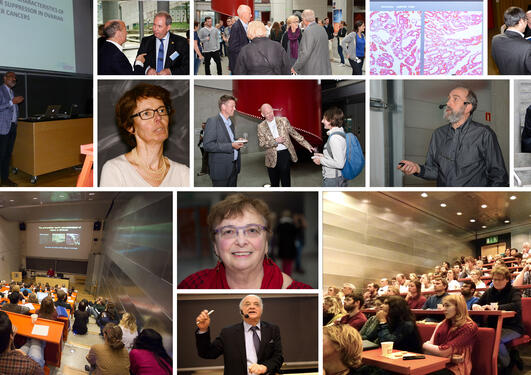CCBIO webinar: Joyce Bischoff
Endothelial anomalies in vascular tumors and vascular malformations
Main content
Joyce Bischoff
Vascular Biology Program, Boston Children's Hospital, Harvard Medical School, Boston, MA, USA
The seminar will cover two topics: 1) the common vascular tumor of infancy known as infantile hemangioma and 2) capillary malformations in the setting of Sturge-Weber syndrome, a rare neurocutaneous disorder.
Infantile hemangioma (IH) has a unique lifecycle in which vascular overgrowth occurs for over the first 6-9 months of infancy, followed by a slow spontaneous involution of blood vessels over several years. In about 10% of cases, IH can enlarge dramatically and threaten organs. Propranolol, a non-selective β-adrenergic receptor antagonist, has emerged as first-line therapy for endangering IH, yet how it works in reducing the vascular overgrowth in IH is unknown. Up to 18% of IHs fail to respond to propranolol therapy, up to 25% resume growth when the drug is stopped, and 37% of propranolol-treated infants require surgery at 5-6 years of age to minimize deformity caused by remaining fibrofatty residua. To improve on propranolol, it is essential to elucidate its mechanism of action against vascular overgrowth, and potentially other neovascular diseases as well. We previously identified a hemangioma stem cell (HemSC) from human IH surgical specimens that can differentiate into endothelial cells, pericytes and adipocytes and form hemangioma-like vessels within 7 days when implanted into immune-deficient mice. Subsequent studies validated HemSCs as the IH-initiating cell. Our recent results show that a small molecule inhibitor of the transcription factor SOX18 and propranolol both effectively block HemSC-to-endothelial differentiation. Furthermore, the R(+) enantiomer of propranolol, which lacks β-adrenergic receptor antagonistic activity, is equally effective. This novel discovery identifies a β-adrenergic receptor-independent, SOX18-dependent mechanism by which propranolol reduces vascular overgrowth in IH.
Capillary malformation (CM) is the most common type of vascular malformation. CMs are composed of enlarged capillary-like vessels just below the surface of the skin, are seen at birth, and over time can darken, form nodules, and cause soft-tissue and skeletal overgrowth beneath the stain. Sturge-Weber syndrome (SWS) is a neurocutaneous disorder associated with CMs of the face, leptomeninges, and the choroid of the eye; patients suffer from neurological defects and glaucoma. Drug treatment for CMs does not exist and there is no cure. The 2013 discovery of a somatic activating mutation in GNAQ (R183Q) in non-syndromic cutaneous CMs and SWS CMs set the stage for molecular studies of this understudied vascular malformation. GNAQ encodes Gαq, the α-subunit of the heterotrimeric Gq protein that activates phospholipase Cβ. We showed that the GNAQ R183Q allele is enriched in the endothelial cell (EC) sorted from cutaneous CM and SWS brain specimens. We have developed cellular and mouse models to elucidate how the GNAQ mutation affects EC function and leads to CM. We've learned that human ECs with the R183Q mutation do not respond properly to laminar shear stress, express increased levels of angiopoietin-2 and form enlarged CM-like vessels when implanted into mice. This later finding demonstrates that the GNAQ R183Q in endothelial cells is sufficient to form vessels reminiscent of CM.
Chairperson: Reidunn Jetne Edelmann, CCBIO


